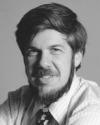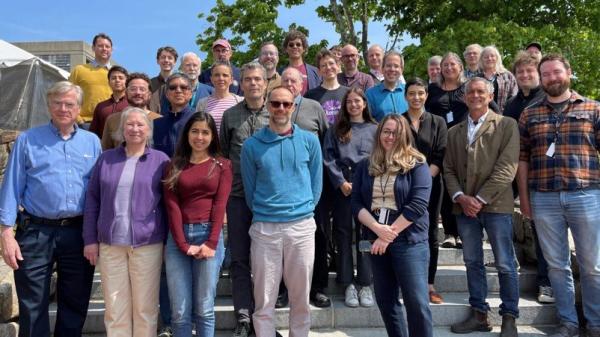Reflections on Woods Hole and the History of Biology
By: Matt Tontonoz
“It’s like seeing Walden for the first time.”
That’s how one speaker described arriving at the Marine Biology Laboratory (MBL) in Woods Hole, MA, for this year’s History of Biology seminar, an event jointly hosted by MBL and ASU. There is so much history embodied in the place, so many famous names and discoveries associated with it, that it’s impossible not to feel a kind of reverence.
That’s certainly how I felt. Walking around campus on the first day, I passed buildings and streets named after biological luminaries I had read about in history books: Frank R. Lillie, Jacques Loeb, Charles Otis Whitman, and Thomas Hunt Morgan. There were also a few names I didn’t recognize, but would come to learn about, such as Cornelia Clapp, the first woman to be awarded a Ph.D. in biology in the United States and a prominent researcher, Trustee, and librarian at the MBL.
I was there as a first-year graduate student in ASU’s Biology and Society Program. My advisor, Jane Maienschein, is a founder and longtime co-director of the seminar. When she asked me if I’d like go, I jumped at the chance.
The theme of this year’s seminar was “Replaying Life’s Tape: Historical Contingency in the Life Sciences.” The title is an homage to the thought experiment popularized by paleontologist Stephen Jay Gould in his famous book Wonderful Life (1989). The book is both a careful analysis of the fossils of the Burgess Shale and a meditation on the nature of history. As Gould wrote there: “I call this experiment ‘replaying life’s tape.’ You press the rewind button and, making sure you thoroughly erase everything that actually happened [during the history of life on Earth], go back to any time and place in the past... Then let the tape run again and see if the repetition looks at all like the original.”
Gould famously thought the answer was “no.” In fact, he thought it unlikely that if you played the tape of life again, humans would ever evolve. This sense of deep historical contingency—that everything we take for granted about the world could have been otherwise—was a key aspect of Gould’s view of life.
With Gould’s thought experiment as our muse, the seminar attendees spent one intense and rich week exploring the meanings of chance and contingency in history, including both history on an evolutionary scale as well has human civil history. We were a diverse group. In attendance were philosophers, historians, biologists, and even one sociologist. They ranged in status from senior scholars and new faculty to recent PhDs and grad students. I was joined by my fellow ASU graduate students Becca Tiernan, Noah Spencer, and Henry Secaira Morocho, who came at the invitation of ASU professor and seminar co-organizer Jim Collins.
The talks proved wide-ranging and provocative. Participants spoke about the origins of Gould’s “replaying the tape” metaphor in early computer programming; philosophized about how “chance” is or is not related and “contingency” in history; examined the role of historical contingency in microbial evolution, ecology, and paleontology; and asked how Gould’s thinking about historical contingency can inform the work of those who seek to address the legacy and persistence of racism in science.
During one especially memorable moment, Everett Mendelsohn—emeritus historian of science at Harvard, founder and editor of the Journal of History of Biology, and mentor to many in the field—recounted participating in a sit-in at a barbershop near Antioch College in Ohio, where both he and Gould went to college (Mendelsohn in the 50s, Gould in the 60s). Mendelsohn was protesting the barbershop’s segregationist policy of excluding Blacks. He participated in the protest with his friend and fellow Antioch student Coretta Scott—later, Coretta Scott King. When Gould arrived at Antioch a few years later, he also participated in sit-ins at the same barbershop, which had continued to refuse to cut Black people’s hair. Rather than integrate, the owner closed his barbershop in 1964, after sit-ins had escalated into protests and marches.
Transforming Traditions
The annual history of biology seminar is a tradition that goes back to 1987, when Jane Maienschein and Garland (“Gar”) Allen organized the first ever history of biology course, in honor of MBL’s centennial celebration. That initially two-week long course eventually morphed into the week-long event that it is today. Like the MBL itself, the list of past participants in the seminar reads like a who’s who in the fields of biology and the history of science: Stephen Jay Gould, Richard Lewontin, Lynn Margulis, Donna Haraway, Anne Fausto-Sterling, Chip Burkhardt, Betty Smocovitis, and so many others were among the early attendees.
Gar Allen, the seminar’s original co-organizer died this past February. We honored Gar’s memory and his many contributions to the field with a toast at his home in Woods Hole on Tuesday night. Gar was a warm and welcoming scholar, and his enduring influence on the character and tenor of the conference was palpable. I felt like I was among friends all week.
The organizers packed a lot into the week-long event. Most attendees stay on-site in a dormitory building that also houses the conference room where talks take place. Attendees meet for breakfast in the dining hall, then move next door for the day’s talks. There are four talks per day, and the day runs from breakfast through dinner, often followed by continued conversation at one of several local pubs. I retired exhausted each night, slept soundly, and arose enlivened and eager for another day of intellectual stimulation. I also enjoyed several large bowls of clam chowder and a number delicious lobster rolls with warm butter.
The MBL is famous for its summer courses, which it has offered for more than a century. Scientists come from all over the world to learn from experts in their fields, while also enjoying the collegial community and pleasant surroundings of Cape Cod. The most popular course over the years was the Embryology Course, which Everett Mendelsohn took in 1955. Every summer, someone would take a photo of the course’s attendees. As a result of the ASU-MBL History Project that Professor Maienschein helped organize, and which ran from 2012 to 2019, both the MBL and ASU now have an archival collection of all these photos—many in black and white—and it’s fun to peruse past years and contemplate the history they document.
The History of Biology seminar has a history of taking photographs too. In this year’s photo, you can me standing in the back row towards the middle (fifth from left), smiling at the thought of being at once a new member of a vibrant community and also one small part of a venerable tradition.




